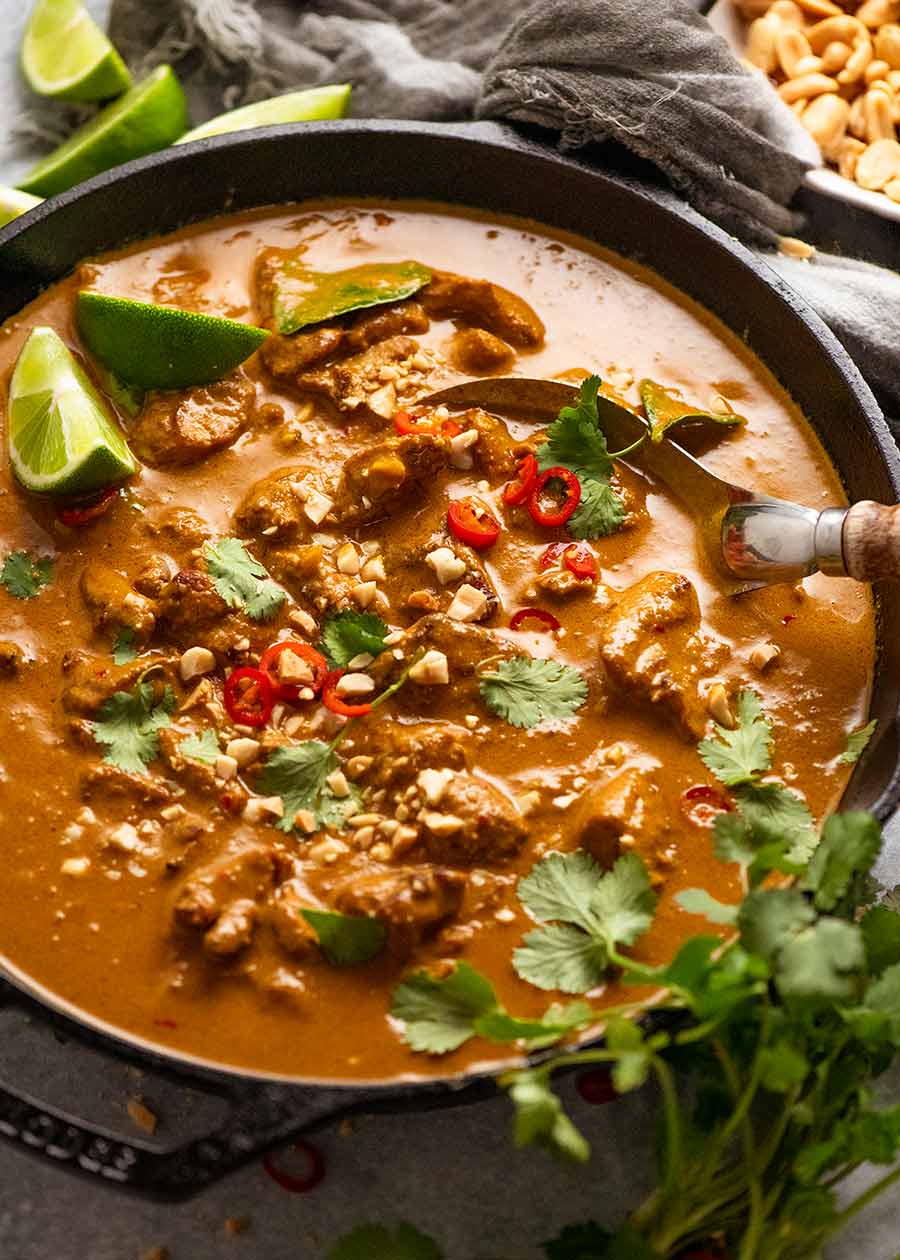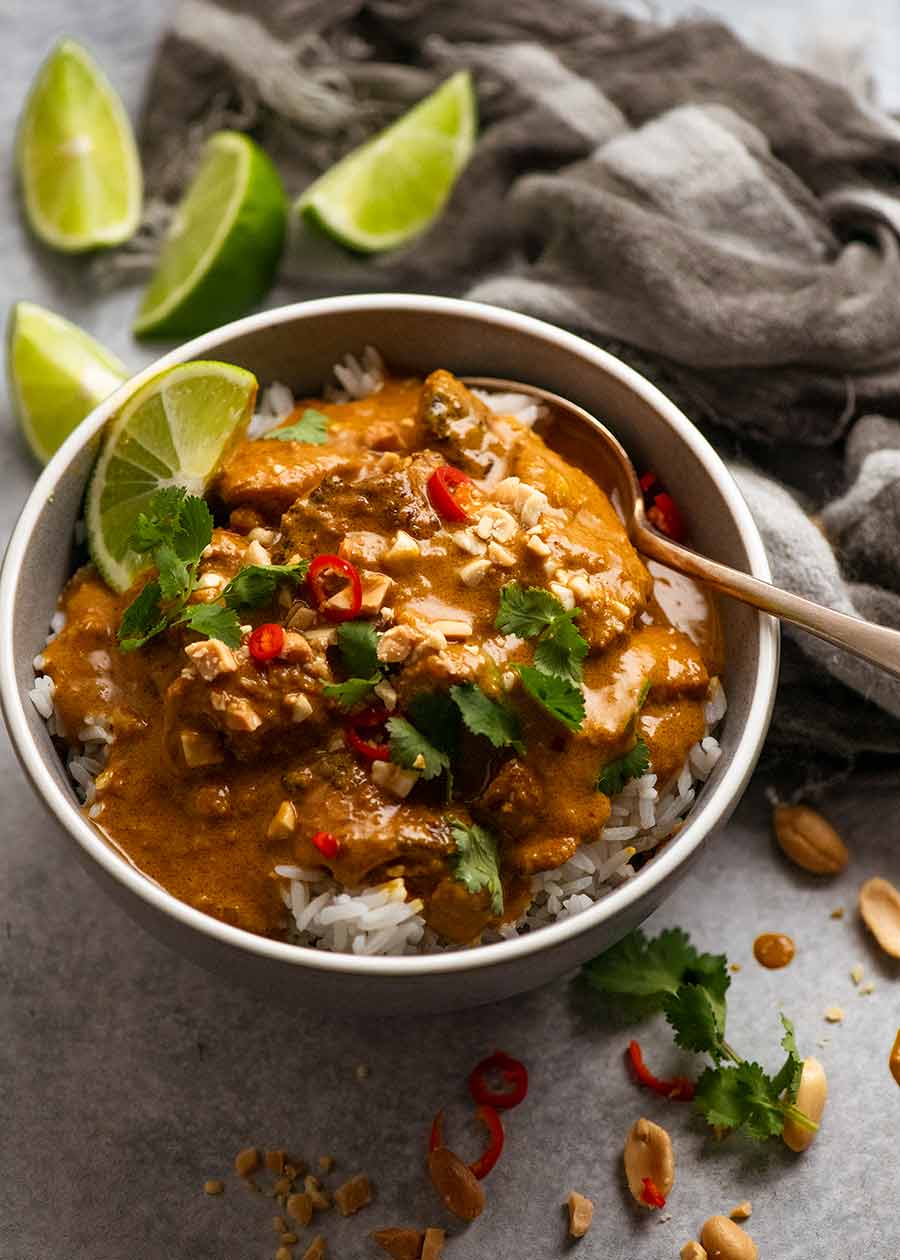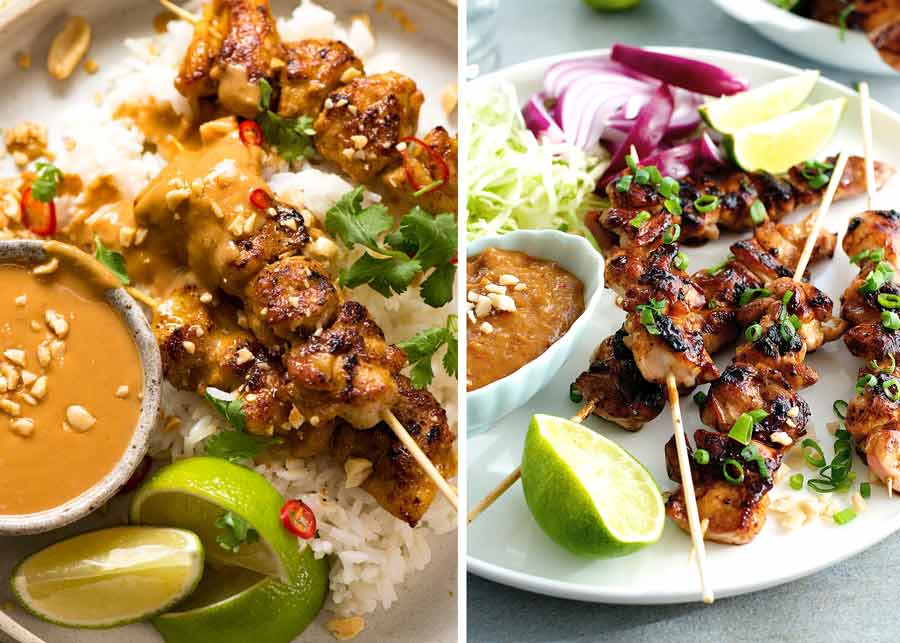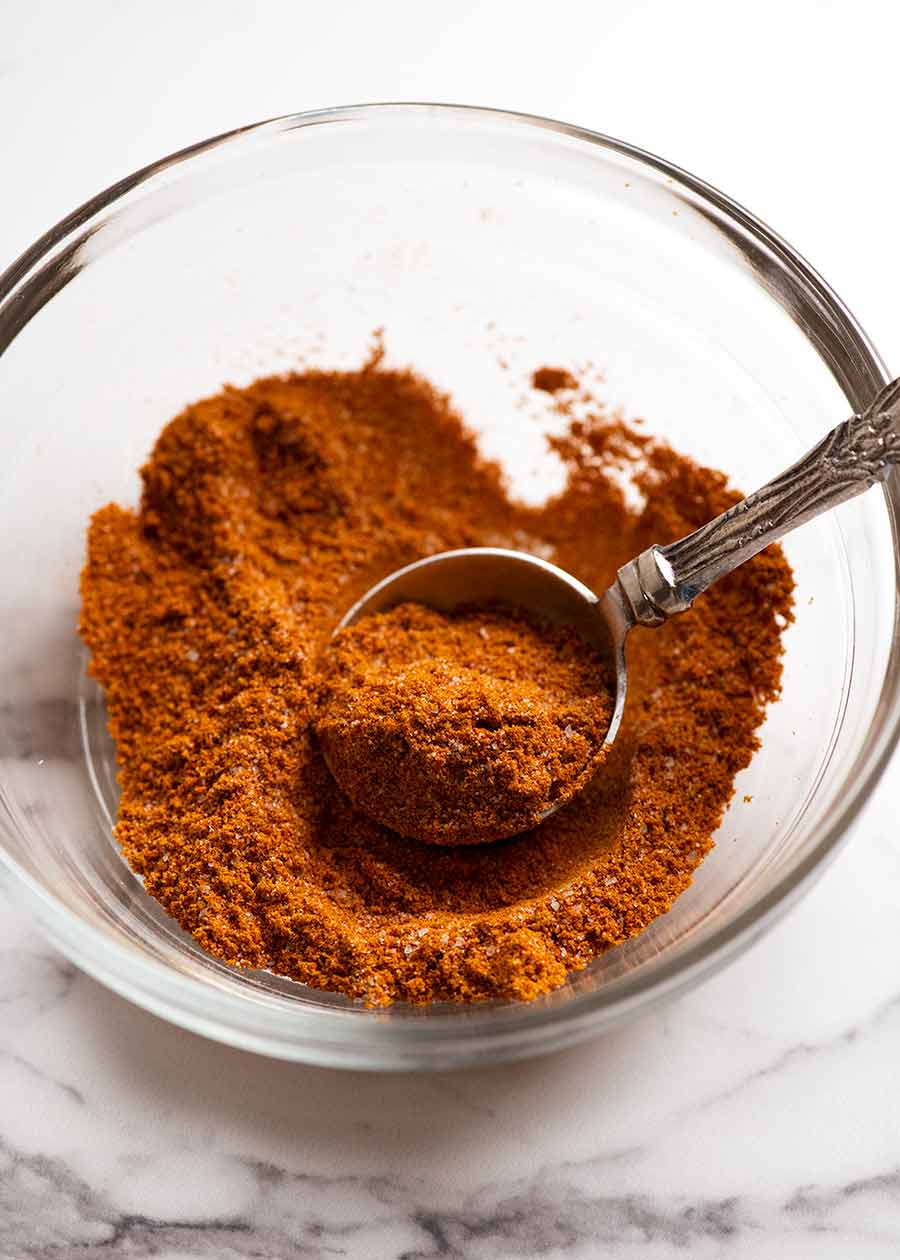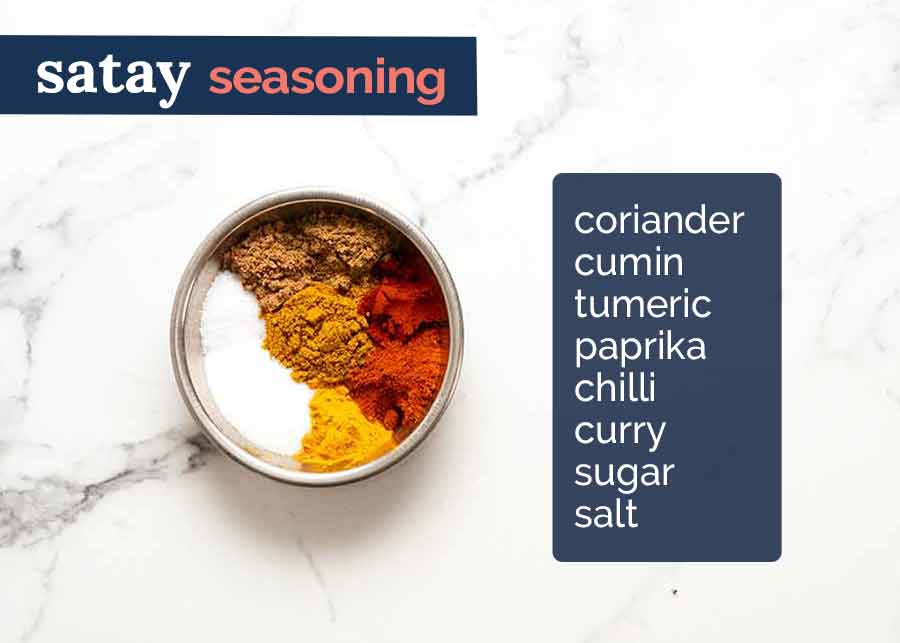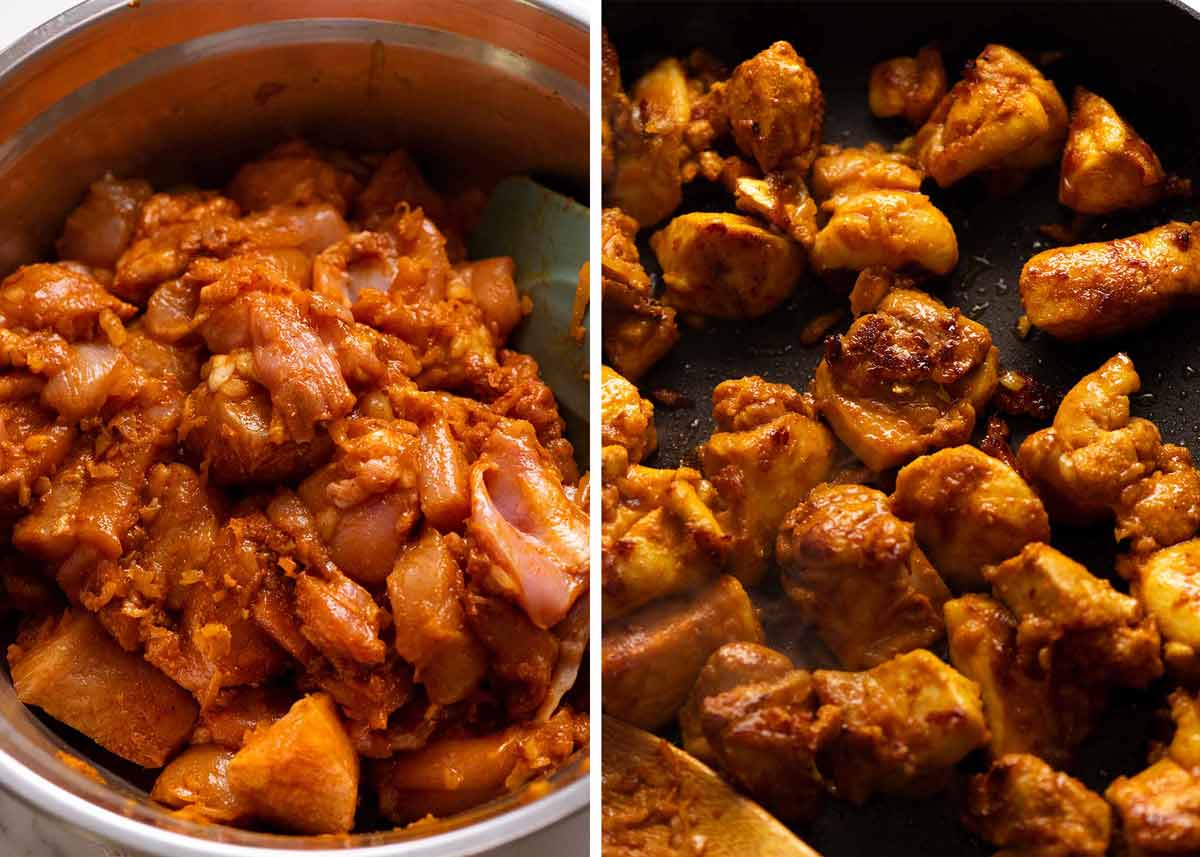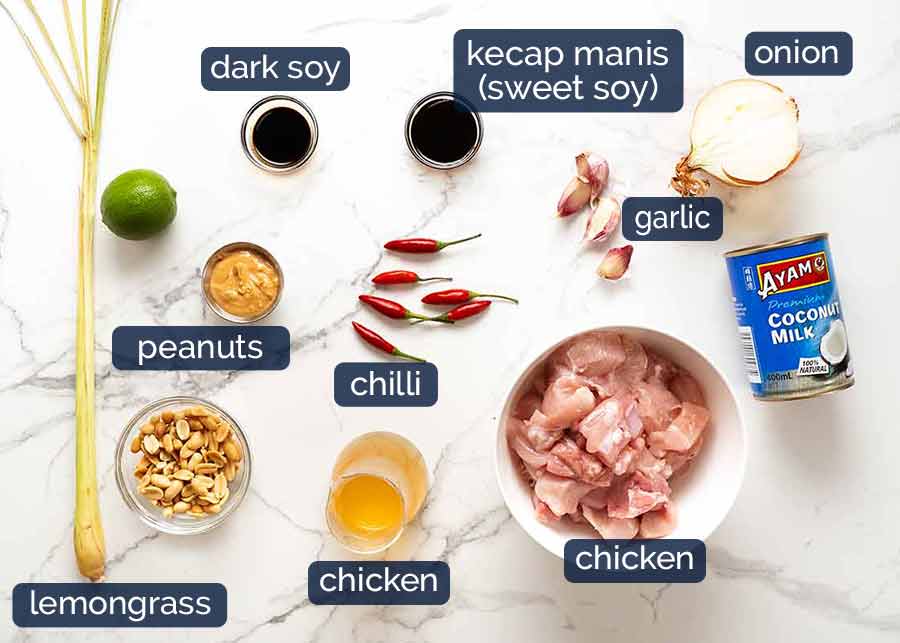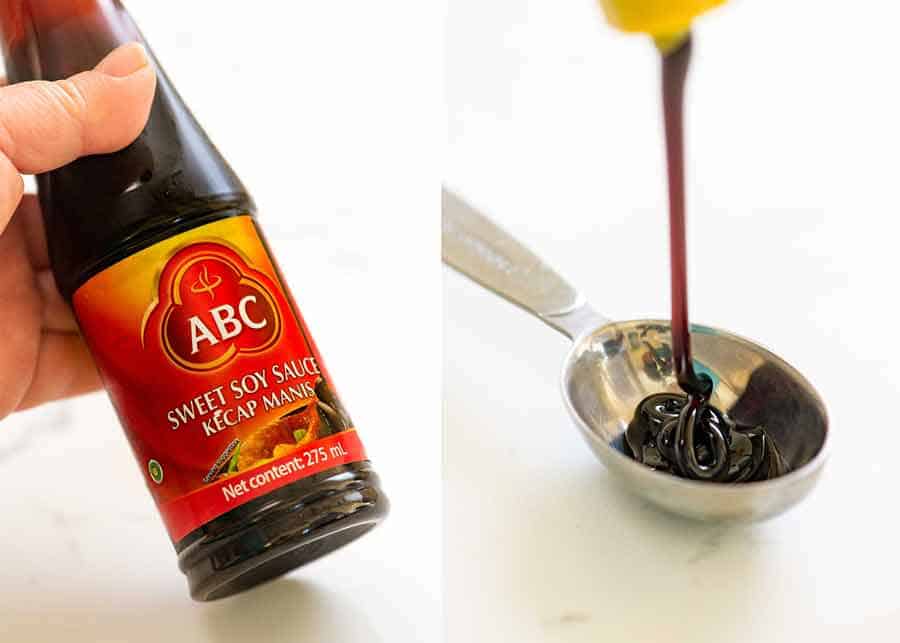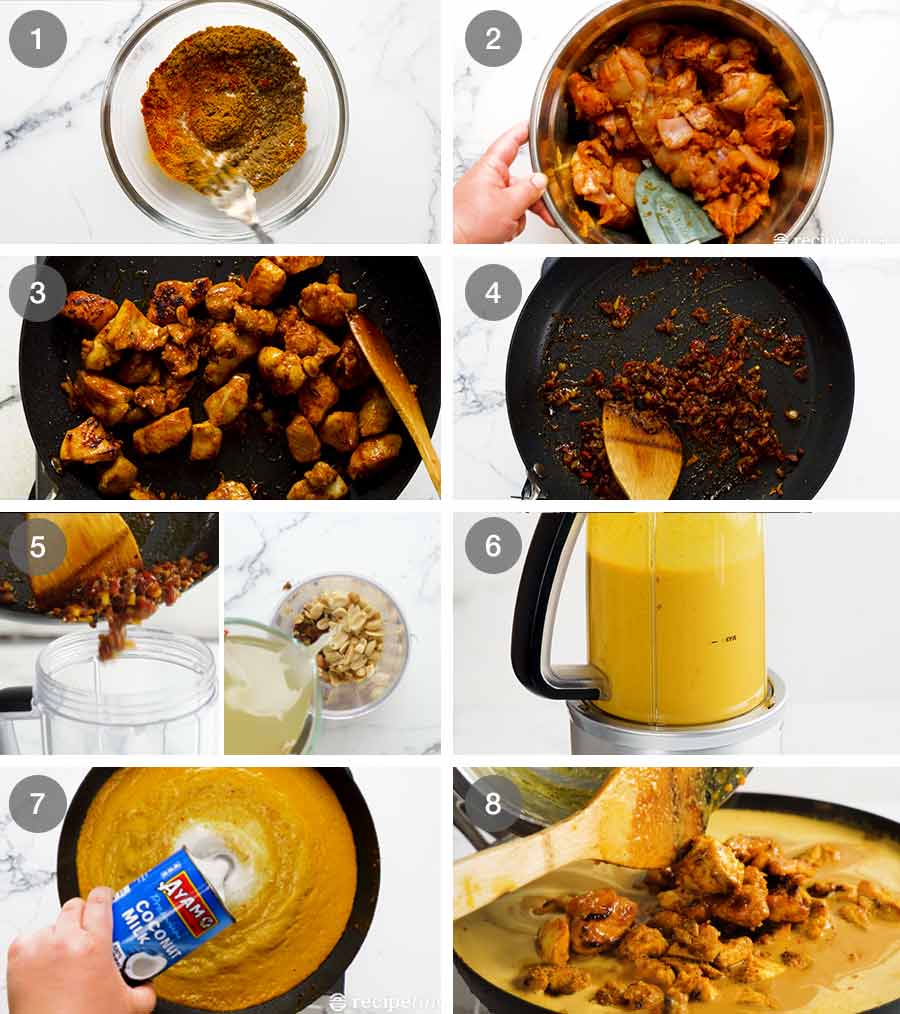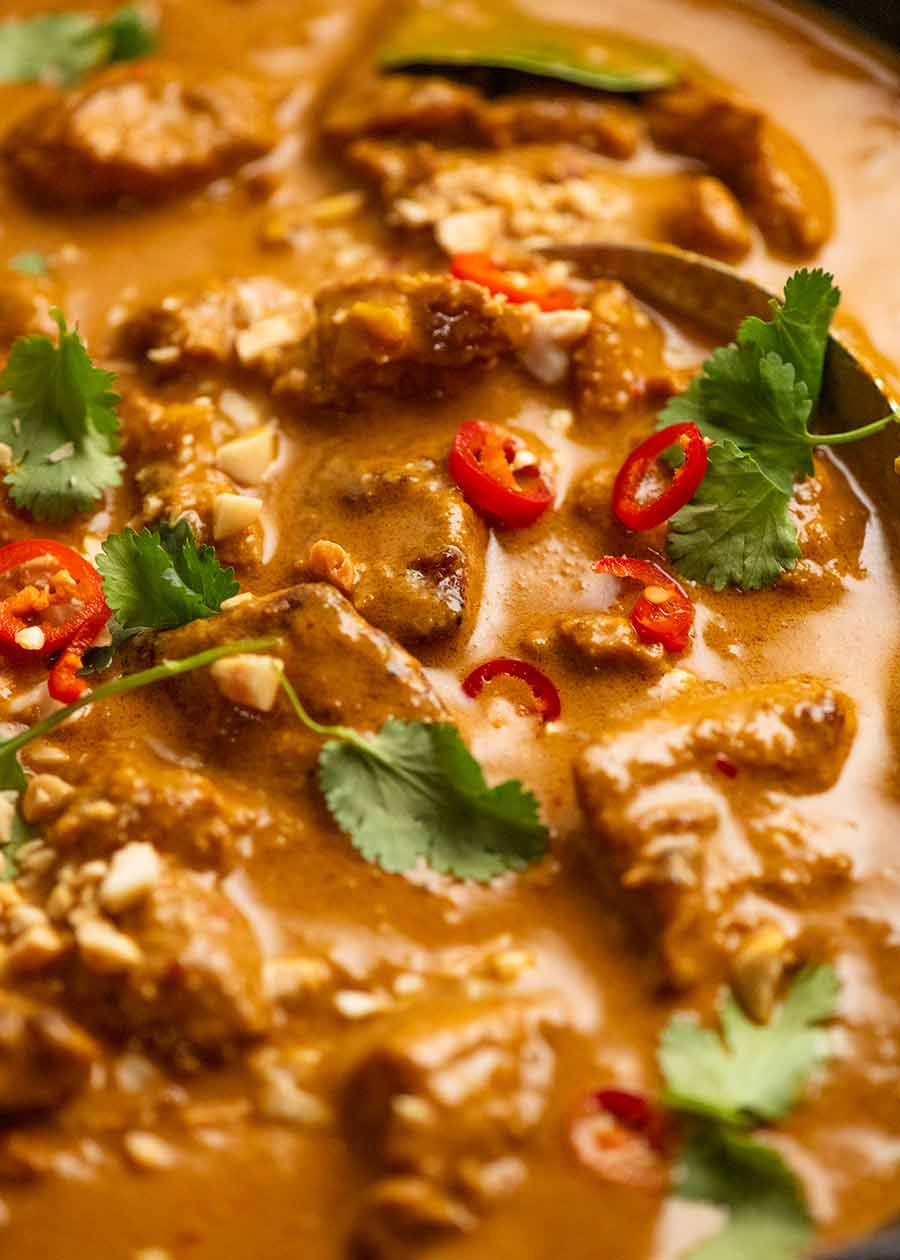Satay Chicken Curry (Malaysian)
“I rarely leave comments on blogs…but I am going OUT OF MY MIND about this recipe. Seriously, it’s the best thing I’ve ever cooked. My partner actually thinks I ordered it from a restaurant and am trying to pretend like I cooked it!” – Kellie, 22 May 2017 As you can see from the date stamp of the above reader feedback, this Satay Chicken Curry is a recipe I published years ago. 9 May 2016, to be exact. Way back before I taught myself to make recipe videos. A recipe this good, a personal favourite of this curry-loving, satay-obsessed gal, had to be filmed. So I’m giving it a total makeover – new photos, new video, tidying up some writing. But I promise I have not touched the recipe. I wouldn’t dare – too many people are obsessed with it!!
Different types of satay
Real Satay Chicken is skewered chicken marinated with satay seasonings, seared over charcoal and served with a peanut sauce. Many South East Asian countries have their own version, with most well known being Thai, Indonesian (Bali) and Malaysian (this recipe). All are slightly different, but have similar undertones. Thai Chicken Satay (pictured below, left) is sweeter, more coconut-y and has a mild red curry flavour (the secret ingredient). Indonesian Satay (below right) is the simplest and most peanutty. Malaysian Satay is said to be the king of all Satays, with the most complex, deep flavours. Stronger satay seasoning, less peanutty and less coconutty than Thai and Indonesian.
What this tastes like (and why it’s not on skewers)
As far as I know, Chicken Satay in this curry-like form is not authentic Asian. But I love making it this way because it’s so much more satisfying to eat (compared to tiny little skewers!) and so much easier to make large volumes (again – no skewering!). But while the form of this Satay Chicken Curry might not be an authentic Asian recipe, I can promise you this: it tastes 100% authentic. Because I’ve used a Chef recipe for the homemade satay seasoning and a Restaurant recipe for the Peanut Sauce (this recipe from Chinta Ria in Sydney). 🙂 I think you will be surprised when you see the ingredients for the Satay Seasoning. All spices that you might already have in your pantry!
Ingredients in Satay Seasoning
The foundation of this recipe is the homemade Satay Seasoning which is used for both marinating the chicken AND in the satay sauce. Here are the spices required: coriander, cumin, turmeric, paprika, chilli, curry powder (any brand is fine), sugar and salt.
🇺🇸US readers note: the “chilli powder” in this recipe is not what you call “Chili Powder” (with one “l”) which is a spice mix that is not very spicy. This recipe calls for real chilli powder which is pure ground dried chillies and it is spicy!
With the Satay Seasoning, the chicken is absolutely divine by itself. I could honestly eat it straight out of the pan, without the peanut sauce. But with the peanut curry sauce….it just takes it to a whole new level……
Ingredients in Satay Curry Sauce
And here’s what goes into the sauce:
Chicken – thighs are best for the juiciest pieces of chicken, but breast and tenderloin work fine too. Other proteins: pork and beef work too, but it needs to be slow cooking cuts simmered for an hour or so until fall-apart tender. I’ve popped tips in the recipe notes; Peanuts – roasted, unsalted. Some for blitzing into the sauce, some added later for a bit of crunch in the sauce; Peanut butter – NATURAL is best (ie no added sugar or oil) because it has the most intense peanut flavour and is thinner than sweetened peanut butter spread. But ordinary peanut butter spreads will work fine too – the peanut flavour is slightly less intense; Fresh red chilli – I’ve used birds eye chilli here (a common type Australia). 6 chilli = noticeable spiciness but won’t blow your head off. Dial it down if you can’t handle the heat. If you can’t find these specific chillies, don’t worry – use any red chilli you can find, remembering the rule that the smaller the chilli, the spicier it is. You can also leave it out, or take the safe route and start with less then use chilli powder at the end to dial up the spice. Some alternatives: Thai Red Chillies are around the same spiciness. Cayenne is much less spicy (and larger). Habanero is spicier so use 1/2 of 1 (about 1/2 tsp); Kecap Manis – this is a sweet soy sauce with a consistency like syrup. Here in Australia, kecap manis is available in major supermarkets, in the soy sauce section. And if you can’t find it at your supermarket, don’t worry! It is SO easy to make – just reduce soy sauce and brown sugar. Seriously. I’ve included directions in the recipe for you;
Dark soy sauce – the intense colour of this soy sauce is what darkens the sauce colour from a pale yellow colour to a deeper orangey reddy colour. Read more about different soy sauces here. Don’t have it or can’t find it? That’s ok – you can use normal or light soy sauce, just know your sauce colour will be lighter. Won’t affect flavour that much; Coconut milk – full fat, for best flavour (because coconut flavour is in the fat); Chicken stock/broth – to thin about the sauce. Much tastier than using water; Lime juice – for a touch of sour, to balance out the flavour. Not the end of the world to substitute with a vinegar (it’s not a major flavour component in this recipe); Garlic and onion – essential aromatics; Lemongrass OR kaffir limes leaves – plonking either of these into the sauce as it simmers adds a special extra touch of flavour that really elevates it to “real restaurant” flavour. It is still mighty tasty without (I’ve made this plenty of times without either of them) but with, it really is that little bit more special. They both add similar flavour – so use whichever is easier for you to find.
Kaffir lime leaves – sold in small packets at fruit & veg stores, Asian stores and most large grocery stores in Australia. Leftovers freeze perfectly, and it’s used in most authentic Thai dishes (like red curry, Tom Yum Soup) as well as other South East Asian dishes like Beef Rendang and Coconut Rice. Lemongrass – using a fresh stalk is best if you can get it (bashed to release flavour), otherwise a dab of paste from a tube will works wonders too. If you use paste, just stir in 2 teaspoons when the lemongrass is supposed to go in. Use leftover paste for Thai recipes like Thai Meatballs, Red Thai Curry, Poached Salmon in Coconut Lime Sauce, Thai Coconut Noodle Soup.
How to make Chicken Satay Curry
And here’s how to make it – very straightforward!
Food euphoria. Food so good it makes you want to cry. And to think this is made from scratch, no jar pastes…just incredible. This peanut curry sauce is so good it’s nuts. Go on – groan at the terrible pun!!! That might distract you for a mere moment of lusting after this sauce!!! 😉 – Nagi x
Watch how to make it
Originally published May 2016. Updated September 2020 with brand new photos, process photos, brand new recipe video. No change to recipe!
Life of Dozer
No satay for Dozer – too spicy! So he chewed his toy octopus instead.
And from the original publication date: The only reason there’s no photo of Dozer drooling over Satay along with you (and me) is because he’s outside gnawing on a bone. He always splays his front legs out like this when he’s munching on a bone – is this normal?? Looks awkward!
